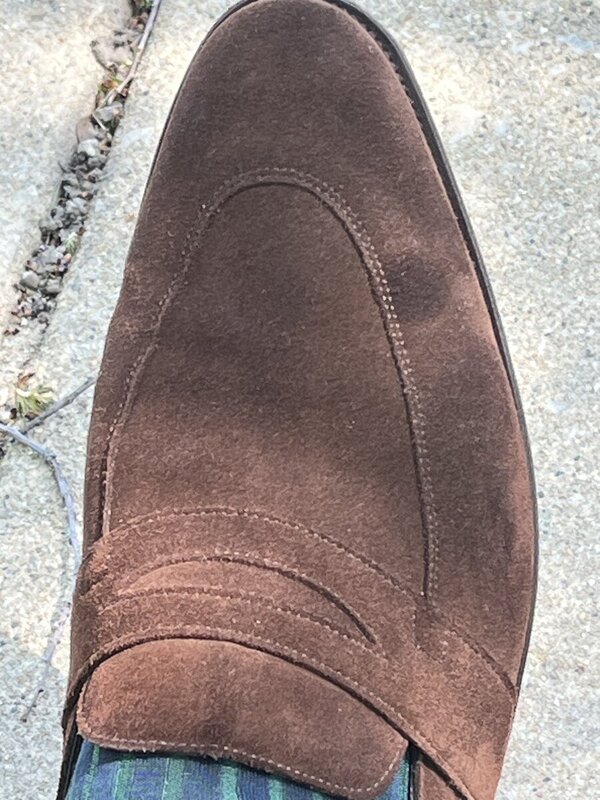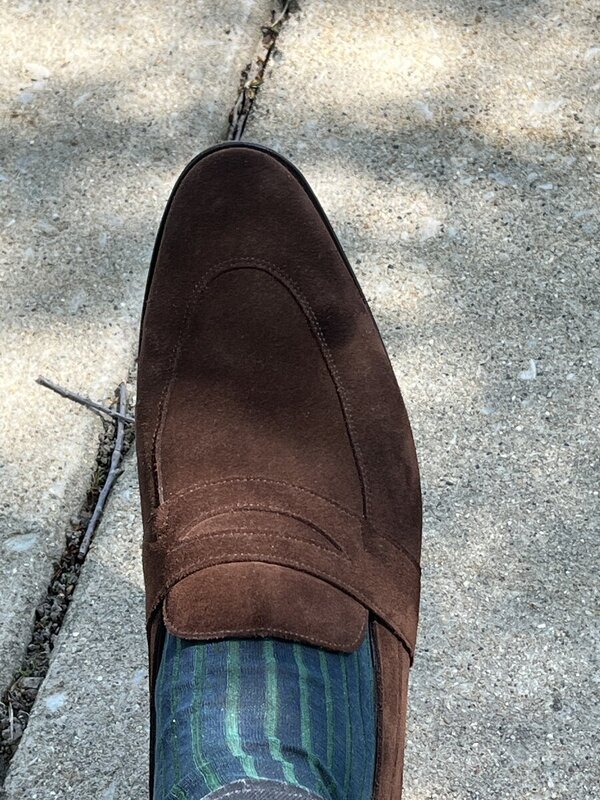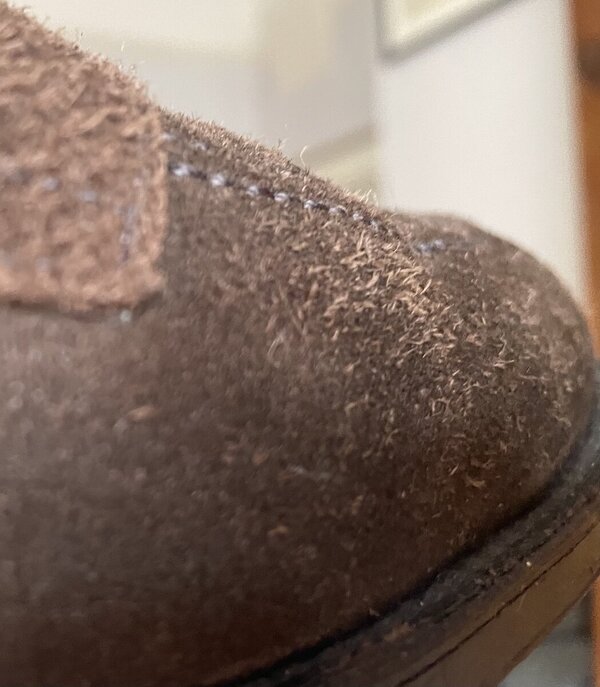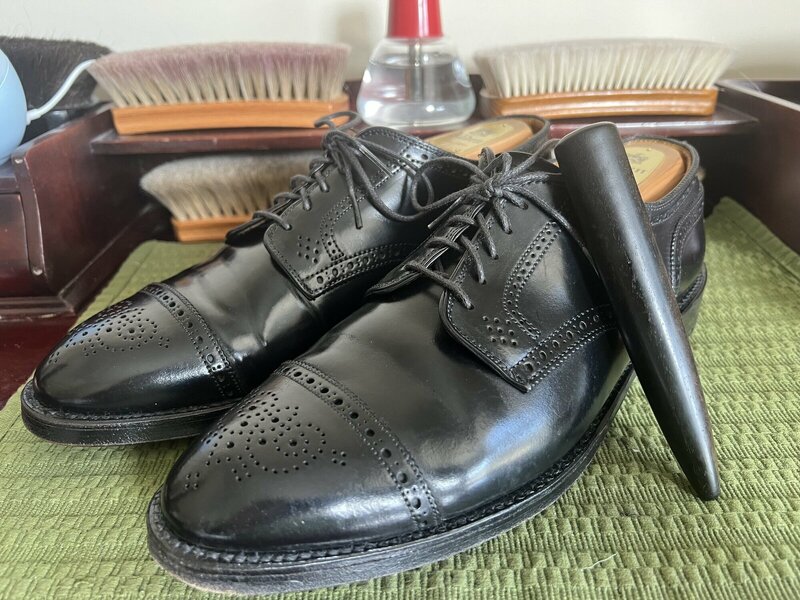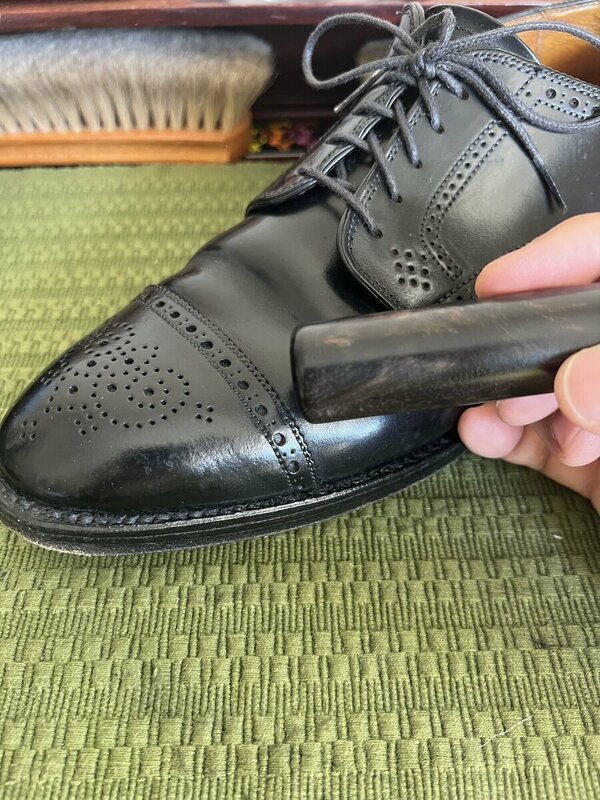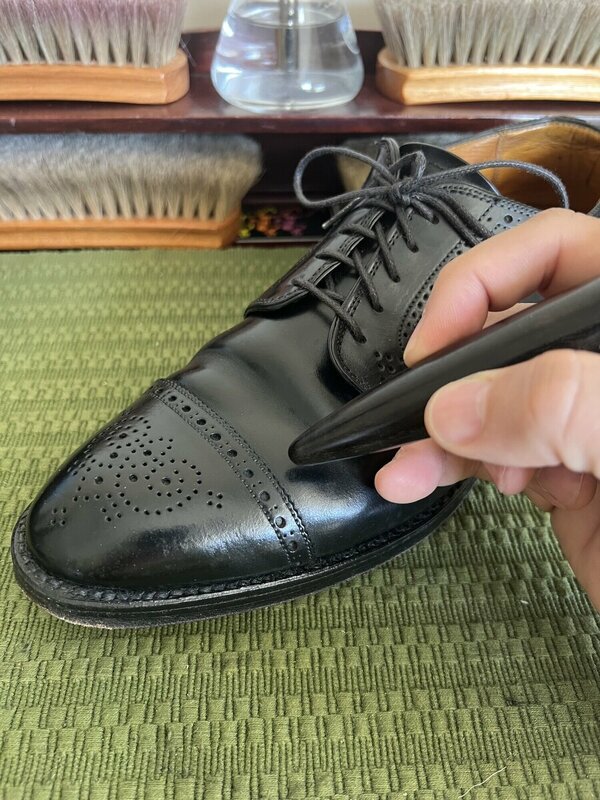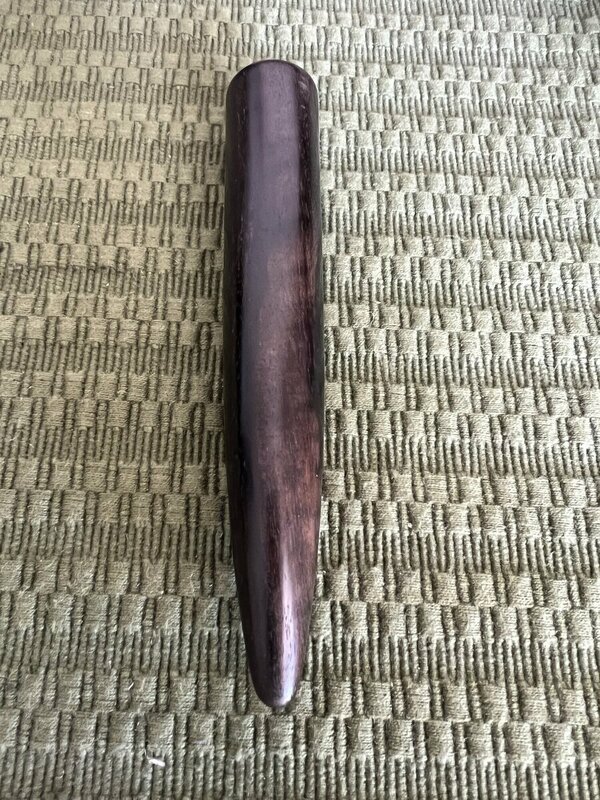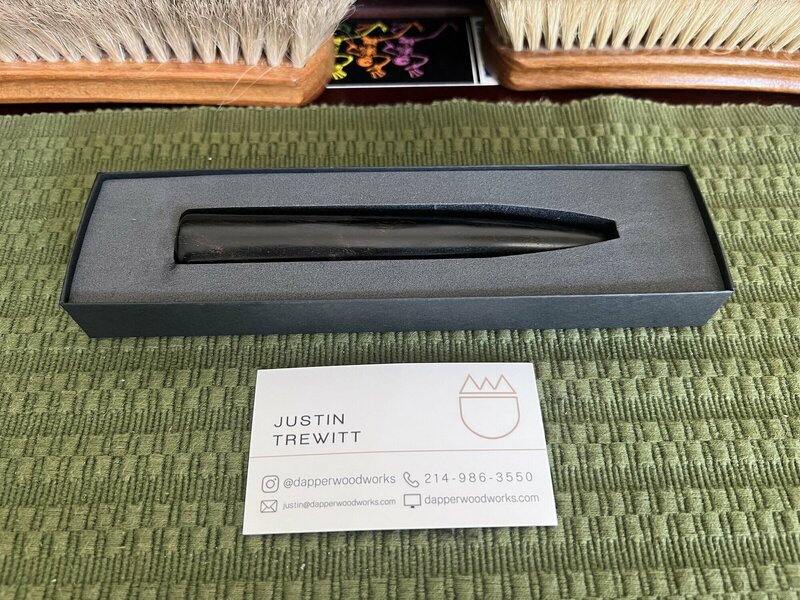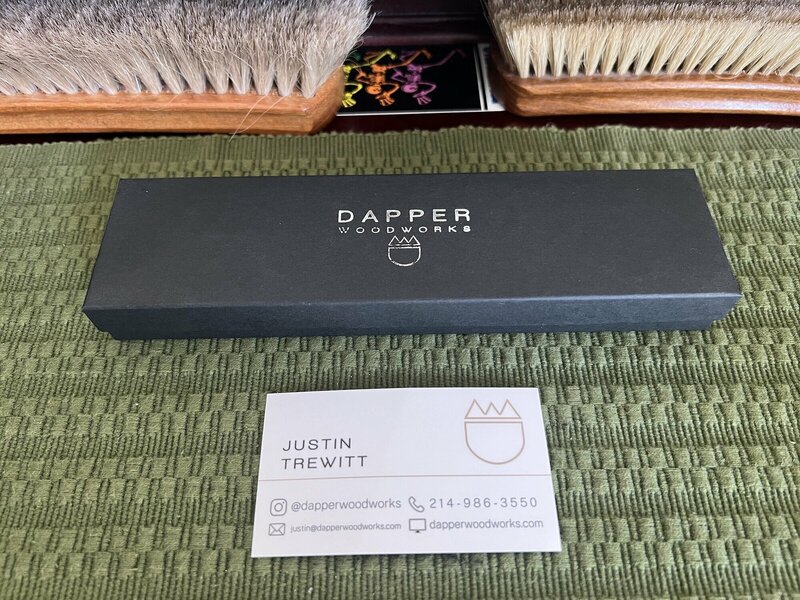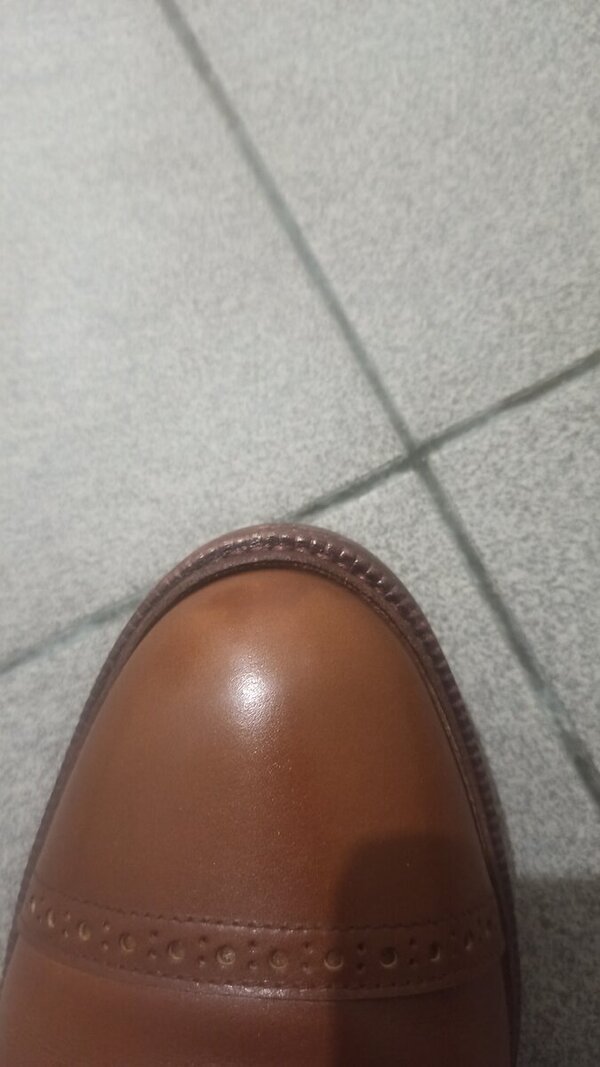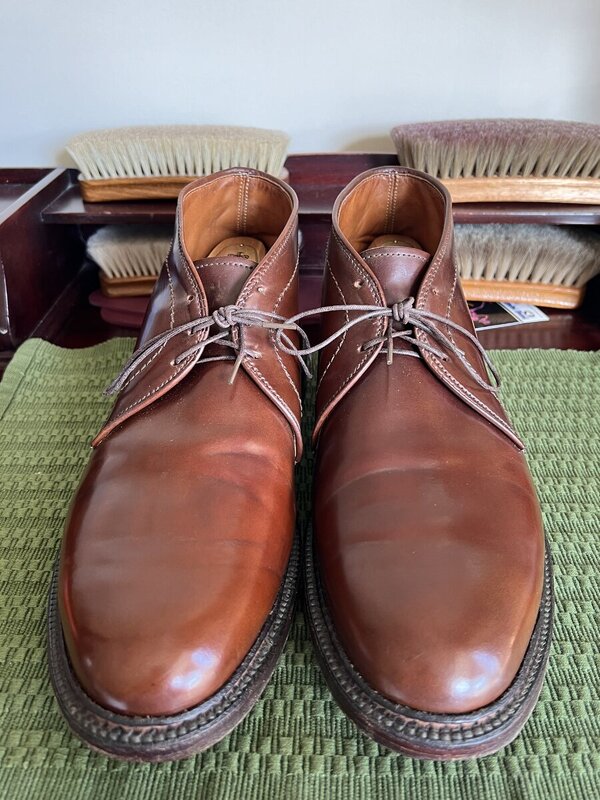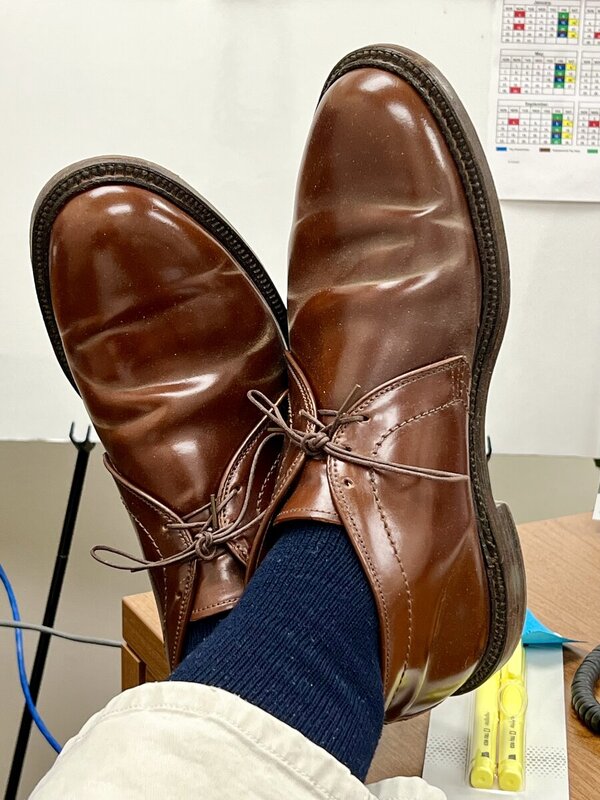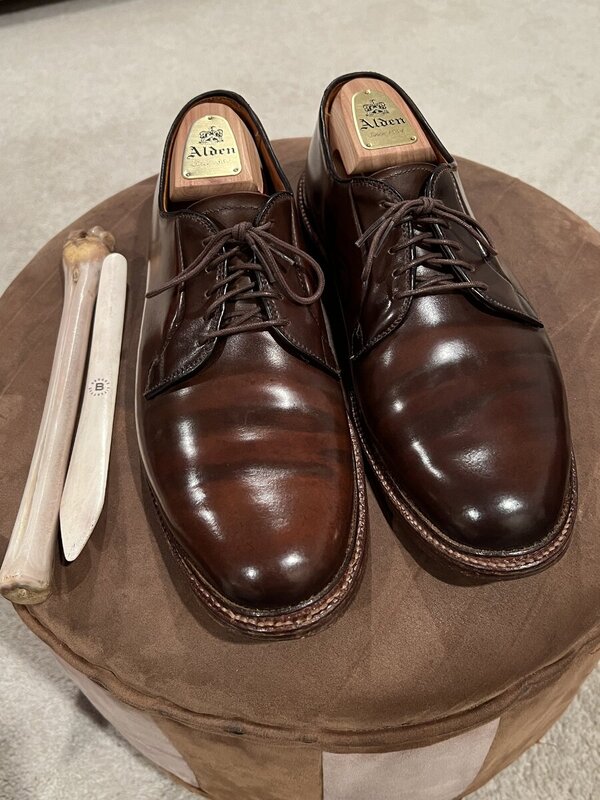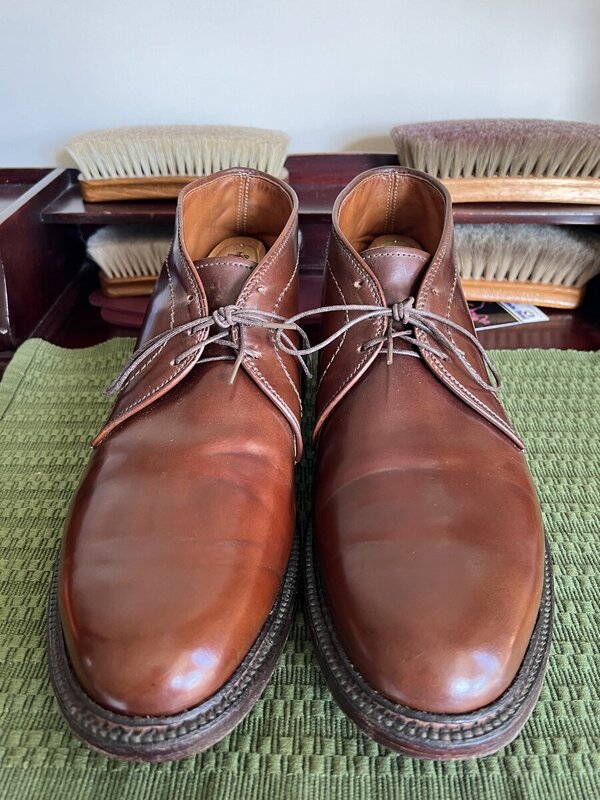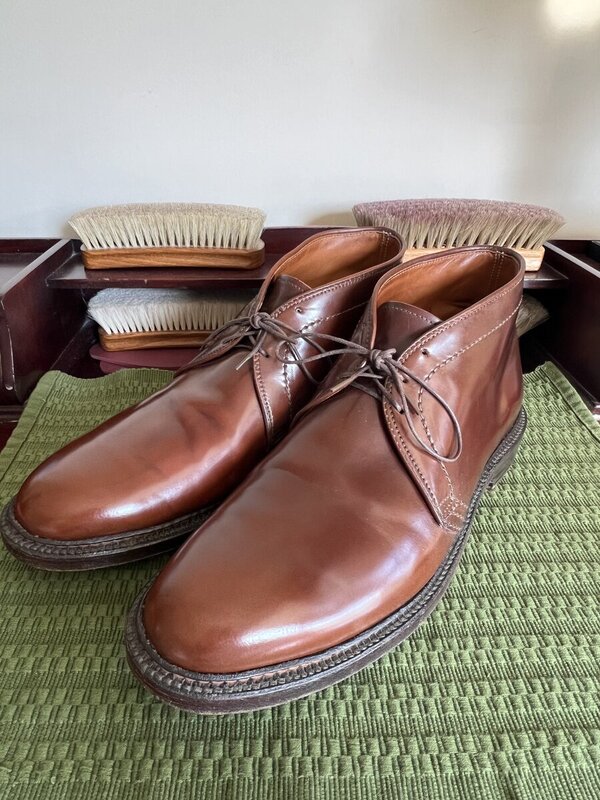Support the forum
Navigation
-
- Men's Style
- Classic Menswear
- Streetwear and Denim
- Preorders, Group Made-to-order, trunk shows, and o
- Menswear Advice
- Former Affiliate Vendor Threads; a Locked Forum.
- Career and job listings in fashion, mens clothing,
-
- American Trench
- AMIDÉ HADELIN
- Archibald London
- The Armoury
- Arterton
- Besnard
- Canoe Club
- Capra Leather
- Carmina
- Cavour
- Crush Store
- De Bonne Facture
- Drinkwater's Cambridge
- Drop93
- eHABERDASHER
- Enzo Custom
- Epaulet
- Exquisite Trimmings
- Fils Unique
- Gentlemen's Footwear
- Giin
- Grant Stone
- House of Huntington
- IsuiT
- John Elliott
- Jonathan Abel
- Kent Wang
- Kirby Allison
- Larimars Clothing
- Lazy Sun
- LuxeSwap
- Luxire Custom Clothing
- Nicks Boots
- No Man Walks Alone
- Once a Day
- Passus shoes
- Proper Cloth
- SARTORIALE
- SEH Kelly
- Self Edge
- Shop the Finest
- Skoaktiebolaget
- Spier and MacKay
- Standard and Strange
- Bespoke Shoemaker Szuba
- Taylor Stitch
- TLB Mallorca
- UNI/FORM LA
- Vanda Fine Clothing
- Von Amper
- Wrong Weather
- Yeossal
- Zam Barrett
Install the app
More options
-
Hi, I am the owner and main administrator of Styleforum. If you find the forum useful and fun, please help support it by buying through the posted links on the forum. Our main, very popular sales thread, where the latest and best sales are listed, are posted HERE
Purchases made through some of our links earns a commission for the forum and allows us to do the work of maintaining and improving it. Finally, thanks for being a part of this community. We realize that there are many choices today on the internet, and we have all of you to thank for making Styleforum the foremost destination for discussions of menswear. -
This site contains affiliate links for which Styleforum may be compensated.
-
STYLE. COMMUNITY. GREAT CLOTHING.
Bored of counting likes on social networks? At Styleforum, you’ll find rousing discussions that go beyond strings of emojis.
Click Here to join Styleforum's thousands of style enthusiasts today!
Styleforum is supported in part by commission earning affiliate links sitewide. Please support us by using them. You may learn more here.
You are using an out of date browser. It may not display this or other websites correctly.
You should upgrade or use an alternative browser.
You should upgrade or use an alternative browser.
**The Official Shoe Care Thread: Tutorials, Photos, etc.**
- Thread starter Mr. Moo
- Start date
- Watchers 1,521
MoneyWellSpent
Distinguished Member
- Joined
- Oct 4, 2012
- Messages
- 2,697
- Reaction score
- 1,178
I think there are places where synthetic materials are not necessarily bad. I topyed most of my shoe, and I know some of the cheaper ones I used to have probably have synthetic toe puff and as far as durability goes, I can't see the difference...
I think the synthetic toe and heel stiffeners are unlikely to cause significant problems as long as your shoes have a good rotation, are allowed to dry well after wearing, and are kept with shoe trees. The synthetic materials don't breathe, so moisture collects in the lining and can't pass through the stiffener and upper to exit the shoe. They increase the harmful environment that is destructive to leather in the long run (i.e. salty sweat). This may or may not ever cause the shoe to be "worn out" sooner than one with a natural leather stiffener, because of the multitude of reasons that shoes wear out. However, it is theoretically a "weak link", just like canvas gemming is. Shoes with as few weak links as possible should theoretically be the longest lasting ones, but you simply can't worry yourself over all of the possibilities.
A pair of Frommer's from DWFII essentially has zero weak links, which is something that can't be said of many shoes out there.
MoneyWellSpent
Distinguished Member
- Joined
- Oct 4, 2012
- Messages
- 2,697
- Reaction score
- 1,178
To cut to the chase: is the suggestion, now, that Goodyear welting is not a particularly good thing?
I think it's a great thing personally. As I said, I hold it in about equal regard with Blake/Rapid, because the pros and cons cancel each other out in most manufacturers. Goodyear-welting (and Blake/Rapid) has allowed most people to buy shoes that can last a couple of decades with good care (and have several pairs). Without it, you are stuck buying shoes that use inferior stitching techniques, or are purely cemented, OR spending thousands per pair on a bespoke hand-welted shoe.
There are some hand-welted ready-to-wear makers (Meermin Linea Maestro, for example) to consider which are a decent compromise I suppose, but they are partly made in China to keep costs down if that sort of thing bothers you.
VegTan
Senior Member
- Joined
- May 4, 2013
- Messages
- 160
- Reaction score
- 113
To that end, pigmented leathers are made! Roughly speaking, there are 3 kinds of leathers; aniline leathers, burnished leathers(unfinished leathers which are finished by shoe factories), and pigmented leathres. Allen Edmonds says 6-7 pairs per a piece of calfskin(, around 09:10), and I think Allen Edmonds uses pigmented leathers.
Can I assume that making the entire upper out of single piece of leather is along the same lines? It required finding a large flawless piece, and then the shows off the labor of a highly skilled craftsperson? Few people who run the machines at shoe factory could make a shoe like this at all, even if they were given the time and materials to try?
To that end, pigmented leathers are made! Roughly speaking, there are 3 kinds of leathers; aniline leathers, burnished leathers(unfinished leathers which are finished by shoe factories), and pigmented leathres. Allen Edmonds says 6-7 pairs per a piece of calfskin(, around 09:10), and I think Allen Edmonds uses pigmented leathers.
http://www.hewitonline.com/Leather_s/3.htm
Grading - The grading of leather is based on holes, grain scratches and other defects such as staining or shape. In principle, we look at the undamaged part of a skin and try to assess how usable it is. A first grade skin should yield a large rectangle, centered on the spine and extending most of the way to the edges. There may be one or more small damages near the edges but these should not detract from the overall efficiency of cutting. A second grade skin should be suitable for smaller full bindings or for large half- and quarter-bindings. Where offered, such as in our calf range of products, lower grades are likely to have more defects spread across the skins and are most suitable for repair and rebacking work where relatively small pieces are required. If you need to order leather for a specific project, the safest option is to let us have details of the number and dimensions of panels you require. We can then choose the most appropriate skin or skins and provide a quotation for your consideration.
http://www.hewit.com/skin_deep/?volume=10&article=2
Grading
I write about grading with a little trepidation. The reason for this is that everybody has their own ideas about how a skin should be graded. I thought however that it would be worth putting J. Hewit & Sons grading system down on paper considering that we are now dealing directly with more new customers since the advent of our on-line web catalogue. I am going to divide the leather types into "Commercial" (all resin pigmented leathers) and "Craft" (all leathers suitable for handwork).
Commercial
I have included in the commercial leathers all smooth, glazed and embossed pigmented leathers. These leathers are generally only sold in 2 grades, 1st and 2nd. Generally the grade I skins are blemish-free, although it is possible that a small defect might be found at the edge of the skin. Grade 2 skins will have either a hole or some defect that has not covered with the embossing or haircell print, however in most cases there is still sufficient clean area for at least one full binding. As a rule we normally assume the glazed sheep skivers are more often going to be used for titling pieces, and this results in a higher proportion of grade 2 skins being found in this leather.
Craft Leathers
I have included in the craft leathers all those leathers with a natural grain suitable for handwork - Bookcalf, Chieftain and Clansman Goats etc. The majority of our craft leathers are available three grades - 1st, 2nd and 3rd.
I am first of all going to mention Bookcalf, (and associated pure aniline leathers). In the case of these leathers where there is no surface coating at all the number of perfect skins runs at only about 1-2%, although there is a sizeable proportion of skins with VERY minor damage. In the case of Calfskins this small percentage are separated out as "Super" grade, whilst the "near perfect" skins are sold as grade 1. Don't expect to be able to order 15 Super quality calf at one go, but if you require one or two perfect skins for some priceless book they are there if required.
With the other craft leathers where there is a degree of surface coating, the 1st grade skins, as one would expect, are as a whole blemish free. There might be a small defect on the belly edge or up in the neck area of the skin, but any such damage should be outside the main cutting area in the centre of the skin. Whilst it would be wonderful to be able to offer all grade 1 skins, we do not live in a perfect world. The proportion of grade 1 skins varies depending on the leather type, but is normally in the range of 10-25%. The bulk of what is left is made up of grade 2 skins.
All grade 2 leathers have some sort of blemish on the grain or flesh of the skin that will show up if incorporated into a binding. These blemishes can vary from a flay mark on the back of the skin, through scratches to holes in the skin. As a rule grade 2 skins will have sufficient clean areas to allow at least one full A4 binding to be cut blemish-free. On the smaller leathers such as the Clansman Niger this is not always possible, and in these cases a view is taken on whether the blemishes are "closed" - can be incorporated into a binding, or "open". There has, of course, got to be some sort of boundary between a grade 2 skin and that of a grade 3 skin, and this by its very nature has to be indistinct. The grading will depend on the number and severity of the blemishes taken in relationship to the size of the skin. A large skin with several major blemishes concentrated in one area leaving a good clean area on the skin will be classified as grade 2, whilst a smaller skin with a series of minor marks scattered over the whole surface will be downgraded to a 3rd grade skin.
This system of grading has worked fairly successfully for many years with our customers in the UK (although I'll no doubt now be flooded with complaints!!). If you are at all unsure of the grade you require, or have an unusual book size, it is worth noting that we are very willing to size skins to customer's requirements. This generally benefits both J. Hewit & Sons and you as Binders since you will receive the most price-efficient skins available from stock, and we can hold onto the limited numbers of grade 1 skins for those customers where price is of lesser importance.
http://www.hewit.com/download/fs-tol.pdf
Bookcalf
Our Bookcalf originates mainly from New Zealand and Scandinavia. The skins are vegetable tanned using Tara and/or Sumac. They are then aniline dyed and dried on our 'glass' drying machine to enhance the natural smoothness and beauty associated with this quality of leather. The surface is absorbent and lends itself well to additional dyeing by the user.
Library Calf
This leather undergoes the same processing as the Bookcalf, but instead of leaving the skins with the aniline look, we finish off the surface with a light pigment coating. This finish lends itself very well to the "trade" binder, as it is more scuff-resistant than the Bookcalf.
http://www.hewit.com/downloads/#price-lists
Book Calf
1st grade, 274.90 GBP
2nd grade, 194.90 GBP
3rd grade, 169.90 GBP
4th grade, 107.50 GBP
Library Calf
1st grade, 237.40 GBP
2nd grade, 167.40 GBP
bahester
New Member
- Joined
- Jul 1, 2013
- Messages
- 1
- Reaction score
- 0
Firstly, I can't say enough how helpful this thread is. Caused me to sign up just based on it alone.
I'm a young guy (23) fresh out of college and starting a professional career where I have to dress pretty nice every day. Just purchased two sets of J&M dress shoes (tan + black) to go with another pair I already own. I never realized there was so much to shoe care and want to take care of them myself so they will last a long time. Can someone just confirm I have a basic set of steps + materials needed?
-Shoe trees
-2 horsehair shine brushes (1 for black, 1 for browns)
-Kiwi shoe polish (black, brown, tan)
-Meltonian shoe cream (black, brown, tan)
-AE Conditioner/Cleaner OR Lexol leather conditioner
Steps:
-Clean w damp cloth (light soap) if needed to remove dirt, debris
-Apply conditioner, let sit for a while, come back and buff it out
-Add shoe cream or polish (plan to rotate every few times to mix between conditioning leather and keeping a nice shine), move to next shoe, buff out with brush, shine with cloth
-Put shoe trees back in and rotate shoes every 2-3 days for wear
I know there are a bunch of different ways to do it, but in general does this sound ok?
I'm a young guy (23) fresh out of college and starting a professional career where I have to dress pretty nice every day. Just purchased two sets of J&M dress shoes (tan + black) to go with another pair I already own. I never realized there was so much to shoe care and want to take care of them myself so they will last a long time. Can someone just confirm I have a basic set of steps + materials needed?
-Shoe trees
-2 horsehair shine brushes (1 for black, 1 for browns)
-Kiwi shoe polish (black, brown, tan)
-Meltonian shoe cream (black, brown, tan)
-AE Conditioner/Cleaner OR Lexol leather conditioner
Steps:
-Clean w damp cloth (light soap) if needed to remove dirt, debris
-Apply conditioner, let sit for a while, come back and buff it out
-Add shoe cream or polish (plan to rotate every few times to mix between conditioning leather and keeping a nice shine), move to next shoe, buff out with brush, shine with cloth
-Put shoe trees back in and rotate shoes every 2-3 days for wear
I know there are a bunch of different ways to do it, but in general does this sound ok?
dbhdnhdbh
Senior Member
- Joined
- Sep 3, 2012
- Messages
- 333
- Reaction score
- 46
VegTan,
Thanks. This is great.
Chogall,
Quote: This is a bad thing? What is the better way?
On DWFII: He is my hero. It is remarkable someone with that level of knowledge and experience takes the time to explain things to the rest of us. I find that often he is so close to the subject that it can be difficult to follow him as he assumes everyone knows a lot about shoemaking. I can do nothing but admire his devotion to making each pair of shoes or boots the best he has ever made. Inspiring. But I could never pay what it would cost to have someone like him make a pair for me.
As I said, my questions are more curiosity than anything else. I doubt anyone really buys the top shoe lines because they last longer. They like the look, the appreciate the craft and the quality, perhaps they feel some kinship with other shoe people. But having paid that much, they expect very high quality of materials and construction.
Materials vs construction: I was not implying that Alden and AE do not use good leather. My question was whether a shoe that costs 10 times as much was made with leather that costs, say $2,000 for a pair. It seems not. From the prices above, the top makers might pay $300 for leather, and get one pair of shoes. AE or Alden might pay the same price and get, say, 5 pair. So one pair has $300 of leather in it and the other $60. That is a meaningful difference- $60 is about what I pay for shoes- but it does not approach the price difference between AE and Lobb. Perhaps AE gets somewhat better prices because they buy large quantities. But even if they got the leather free, that material would not come close to the cost difference in the shoes.
I can appreciate the appreciation of fine shoes without sharing any desire to have a pair for myself. I can see the beauty of a JLC Reverso Duo in rose gold. A wonderful watch. But I am never going to buy one. Not even going to look.
Thanks. This is great.
Chogall,
Quote: This is a bad thing? What is the better way?
On DWFII: He is my hero. It is remarkable someone with that level of knowledge and experience takes the time to explain things to the rest of us. I find that often he is so close to the subject that it can be difficult to follow him as he assumes everyone knows a lot about shoemaking. I can do nothing but admire his devotion to making each pair of shoes or boots the best he has ever made. Inspiring. But I could never pay what it would cost to have someone like him make a pair for me.
As I said, my questions are more curiosity than anything else. I doubt anyone really buys the top shoe lines because they last longer. They like the look, the appreciate the craft and the quality, perhaps they feel some kinship with other shoe people. But having paid that much, they expect very high quality of materials and construction.
Materials vs construction: I was not implying that Alden and AE do not use good leather. My question was whether a shoe that costs 10 times as much was made with leather that costs, say $2,000 for a pair. It seems not. From the prices above, the top makers might pay $300 for leather, and get one pair of shoes. AE or Alden might pay the same price and get, say, 5 pair. So one pair has $300 of leather in it and the other $60. That is a meaningful difference- $60 is about what I pay for shoes- but it does not approach the price difference between AE and Lobb. Perhaps AE gets somewhat better prices because they buy large quantities. But even if they got the leather free, that material would not come close to the cost difference in the shoes.
I can appreciate the appreciation of fine shoes without sharing any desire to have a pair for myself. I can see the beauty of a JLC Reverso Duo in rose gold. A wonderful watch. But I am never going to buy one. Not even going to look.
chogall
Distinguished Member
- Joined
- Aug 12, 2011
- Messages
- 6,562
- Reaction score
- 1,166
if both the outer and lining leather is thick enough, hidden steel eyelet reinforcement shouldnt be needed.
and as to heel counters, plastics/heat formed pvc are easier to work with than leather.
whatever democratizes skills and improve yields will be utilized in mass manufacturing.
and as to heel counters, plastics/heat formed pvc are easier to work with than leather.
whatever democratizes skills and improve yields will be utilized in mass manufacturing.
Last edited:
- Joined
- Jan 12, 2013
- Messages
- 11,955
- Reaction score
- 16,241
There is a very extensive discussion of this subject on one of the threads I know DWF is involved anongst others . Perhaps someone with a better recall than myself could link it
To cut to the chase: is the suggestion, now, that Goodyear welting is not a particularly good thing?
There is a very extensive discussion of this subject on one of the threads I know DWF is involved anongst others . Perhaps someone with a better recall than myself could link it
wurger
Distinguished Member
- Joined
- Jun 12, 2011
- Messages
- 3,976
- Reaction score
- 3,542
Yes, that is about right, just make sure you wear a different pair every day, I think that's what you meant by "rotate shoes every 2-3 days for wear"
Firstly, I can't say enough how helpful this thread is. Caused me to sign up just based on it alone.
I'm a young guy (23) fresh out of college and starting a professional career where I have to dress pretty nice every day. Just purchased two sets of J&M dress shoes (tan + black) to go with another pair I already own. I never realized there was so much to shoe care and want to take care of them myself so they will last a long time. Can someone just confirm I have a basic set of steps + materials needed?
-Shoe trees
-2 horsehair shine brushes (1 for black, 1 for browns)
-Kiwi shoe polish (black, brown, tan)
-Meltonian shoe cream (black, brown, tan)
-AE Conditioner/Cleaner OR Lexol leather conditioner
Steps:
-Clean w damp cloth (light soap) if needed to remove dirt, debris
-Apply conditioner, let sit for a while, come back and buff it out
-Add shoe cream or polish (plan to rotate every few times to mix between conditioning leather and keeping a nice shine), move to next shoe, buff out with brush, shine with cloth
-Put shoe trees back in and rotate shoes every 2-3 days for wear
I know there are a bunch of different ways to do it, but in general does this sound ok?
Yes, that is about right, just make sure you wear a different pair every day, I think that's what you meant by "rotate shoes every 2-3 days for wear"
wurger
Distinguished Member
- Joined
- Jun 12, 2011
- Messages
- 3,976
- Reaction score
- 3,542
I think there are places where synthetic materials are not necessarily bad. I topyed most of my shoe, and I know some of the cheaper ones I used to have probably have synthetic toe puff and as far as durability goes, I can't see the difference...
I think the synthetic toe and heel stiffeners are unlikely to cause significant problems as long as your shoes have a good rotation, are allowed to dry well after wearing, and are kept with shoe trees. The synthetic materials don't breathe, so moisture collects in the lining and can't pass through the stiffener and upper to exit the shoe. They increase the harmful environment that is destructive to leather in the long run (i.e. salty sweat). This may or may not ever cause the shoe to be "worn out" sooner than one with a natural leather stiffener, because of the multitude of reasons that shoes wear out. However, it is theoretically a "weak link", just like canvas gemming is. Shoes with as few weak links as possible should theoretically be the longest lasting ones, but you simply can't worry yourself over all of the possibilities.
A pair of Frommer's from DWFII essentially has zero weak links, which is something that can't be said of many shoes out there.
Yes, as long as those cost cuttings don't affect the look and feel of the shoes, and I rotate my shoes every day, I am happy with those.
MarioImpemba
Distinguished Member
- Joined
- Apr 20, 2012
- Messages
- 1,096
- Reaction score
- 136
Agreed with all of this...but let's bring economics back into this. I do think shoes can be an investment, just not one that appreciates itself.
A nontrivial component that has been overlooked, or simply not mentioned, are the ecological benefits of quality shoes and taking care of them; less waste, less production byproducts, et al. From a business perspective, "Green" carries increasing cache to manufacturers and retailers as a corporate social responsibility marketing ploy that they are willing to invest in. Manufacturing in America is certainly more established in their green-practices than countries with cheap production. Couple that with all the benefits of centralized resources (quicker to-market, more harmonious collaboration across work-channels, combatting increasing wages offshore, ever-increasing transportation/oil prices and duties/taxes), a domestic labor-force willing to ignore basically +20-years of stagnate wages for steady employment, and rising consciousness of "made in usa", and there is a lot to be said for keeping production in America. 60 minutes and the Atlantic have ran stories about it, too, among others.
Last edited:
dbhdnhdbh
Senior Member
- Joined
- Sep 3, 2012
- Messages
- 333
- Reaction score
- 46
Well, it is tough. On the one hand, I agree with the desire to support American workers, use more environmentally friendly practices, and avoid shipping materials and finished products all over the world while dumping CO2 into the air.
On the other hand, those people in those poorly paying dangerous factories in India and Bangladesh are taking the best jobs they can find. I would love to see their working conditions improve, and made safe. But to take away the factory is to condemn them to even worse poverty. No easy answers there.
I admit there is a romance to buying lovingly handmade products from first world companies. Skilled craftspeople with years of training able to make the best possible quality and earn enough to cover a decent living in an expensive country with a generous social safety net. Shoes from Northampton. Watches from Switzerland. Recognize that there are skilled craftspeople in China and India, that they are smart, dedicated, and hardworking. That given the proper time and materials they can make a shoe, a watch, or a car as well as in Europe. Perhaps better.
To some extent one buys from Old World Europe to recall the time when it really was the best. In some cases, that may be the only place looking to make things at the top quality. I suspect one goes to Saville Row in part to get suits made the say they were made 100 years ago, with little in the way of compromise, and few goals other than quality. Like the way DWFII makes shoes. You are supporting a link to something valuable from the past, even if the demands of the modern world no longer make this something many people could afford, or a job many people could pursue.
In other cases, well I don't know who would claim that England makes the best cars in the world. Maybe the prettiest, maybe the most lovingly constructed, maybe with the grandest traditions. On simple quality who would compare a Jaguar to a Lexus?
Way off topic. Now for another newbie question. I can understand that a flawless piece of leather may be difficult to come by, given the lives the animals lead. On the other hand, is it the very rarity that makes it desirable? I like the look of the marks in leather. It makes it look like the natural product it is. It seems hard to find shoes, even at my much lower price point, that preserve this look, but work boots do not appear to require making the leather look "perfect"
On the other hand, those people in those poorly paying dangerous factories in India and Bangladesh are taking the best jobs they can find. I would love to see their working conditions improve, and made safe. But to take away the factory is to condemn them to even worse poverty. No easy answers there.
I admit there is a romance to buying lovingly handmade products from first world companies. Skilled craftspeople with years of training able to make the best possible quality and earn enough to cover a decent living in an expensive country with a generous social safety net. Shoes from Northampton. Watches from Switzerland. Recognize that there are skilled craftspeople in China and India, that they are smart, dedicated, and hardworking. That given the proper time and materials they can make a shoe, a watch, or a car as well as in Europe. Perhaps better.
To some extent one buys from Old World Europe to recall the time when it really was the best. In some cases, that may be the only place looking to make things at the top quality. I suspect one goes to Saville Row in part to get suits made the say they were made 100 years ago, with little in the way of compromise, and few goals other than quality. Like the way DWFII makes shoes. You are supporting a link to something valuable from the past, even if the demands of the modern world no longer make this something many people could afford, or a job many people could pursue.
In other cases, well I don't know who would claim that England makes the best cars in the world. Maybe the prettiest, maybe the most lovingly constructed, maybe with the grandest traditions. On simple quality who would compare a Jaguar to a Lexus?
Way off topic. Now for another newbie question. I can understand that a flawless piece of leather may be difficult to come by, given the lives the animals lead. On the other hand, is it the very rarity that makes it desirable? I like the look of the marks in leather. It makes it look like the natural product it is. It seems hard to find shoes, even at my much lower price point, that preserve this look, but work boots do not appear to require making the leather look "perfect"
patrick_b
Distinguished Member
- Joined
- Aug 13, 2007
- Messages
- 6,739
- Reaction score
- 9,808
I have lots of shoes sitting in the closet, so I figured I'd give ebay a try. Some looked pretty shabby (where they may have sat for 2+ yrs) so I decided to clean, condition and polish. I think it made a difference at ebay. I've only sold a few items at ebay but for this round of shoes, I got so many more views, watchers and questions than before. Clearly, a decent shine coupled with good images makes a difference!
These are "Made in Italy" J&M's from 05 or 06. They had a fair amount of polish on the vamp that would have cracked so I removed it with Renomat, applied some brown AE cream (AE's "premium cream polish") to the whole shoe and then a bit of brown kiwi on the toe. I probably spent 15 minutes per pair.

Same method for these two AE models.

After seeing these pictures, I should have fixed the edge trim.

These are "Made in Italy" J&M's from 05 or 06. They had a fair amount of polish on the vamp that would have cracked so I removed it with Renomat, applied some brown AE cream (AE's "premium cream polish") to the whole shoe and then a bit of brown kiwi on the toe. I probably spent 15 minutes per pair.
Same method for these two AE models.
After seeing these pictures, I should have fixed the edge trim.
Last edited:
Classic Menswear Featured products
-
Carmina - Norwegian Derby Shoes Introducing the classy six eyelet split toe derby in a burgundy Shell Cordovan from Horween Chicago. This style features a single oak-bark tanned sole from Rendembach Jr. and full calf lining color brown.
-
 LuxeSwap Auction - Vintage Antique United States Naval Navy Denim Deck Jacket A piece for denim heads, vintage collectors, streetwear enthusiasts and menswear enthusiasts alike, this extremely rare early US Naval issued deck jacket in raw denim is not likely to ever show up at auction again anytime soon. A Haleys Comet of menswear items, offered at auction at a $9.99 starting bid with no reserve.
LuxeSwap Auction - Vintage Antique United States Naval Navy Denim Deck Jacket A piece for denim heads, vintage collectors, streetwear enthusiasts and menswear enthusiasts alike, this extremely rare early US Naval issued deck jacket in raw denim is not likely to ever show up at auction again anytime soon. A Haleys Comet of menswear items, offered at auction at a $9.99 starting bid with no reserve. -
 Kirby Allison - Luxury Suit Hanger - $32 Kirby Allison's Luxury Wooden Suit Hangers protect your suits from stretched collars and droopy shoulders. Our wooden suit hangers provide five-times more support than average hangers and will protect and extend the life of your most important garments.
Kirby Allison - Luxury Suit Hanger - $32 Kirby Allison's Luxury Wooden Suit Hangers protect your suits from stretched collars and droopy shoulders. Our wooden suit hangers provide five-times more support than average hangers and will protect and extend the life of your most important garments.
FEATURED PRODUCTS
-
 LuxeSwap Auction - Vintage Antique United States Naval Navy Denim Deck Jacket
A piece for denim heads, vintage collectors, streetwear enthusiasts and menswear enthusiasts alike, this extremely rare early US Naval issued deck jacket in raw denim is not likely to ever show up at auction again anytime soon. A Haleys Comet of menswear items, offered at auction at a $9.99 starting bid with no reserve.
LuxeSwap Auction - Vintage Antique United States Naval Navy Denim Deck Jacket
A piece for denim heads, vintage collectors, streetwear enthusiasts and menswear enthusiasts alike, this extremely rare early US Naval issued deck jacket in raw denim is not likely to ever show up at auction again anytime soon. A Haleys Comet of menswear items, offered at auction at a $9.99 starting bid with no reserve.
-
 Wellington Chore Boot - Special Introductory Price! $495
Introducing the latest addition to Nicks Handmade Boots collection: The Wellington Chore Boot. Engineered for the rigors of daily tasks, this boot is more than just footwear; it's a reliable companion for your everyday adventures. Crafted with convenience in mind, its effortless pull-on design ensures you're always ready to tackle whatever the day throws your way.
Wellington Chore Boot - Special Introductory Price! $495
Introducing the latest addition to Nicks Handmade Boots collection: The Wellington Chore Boot. Engineered for the rigors of daily tasks, this boot is more than just footwear; it's a reliable companion for your everyday adventures. Crafted with convenience in mind, its effortless pull-on design ensures you're always ready to tackle whatever the day throws your way.
-
Besnard - Made to Order Trousers - $351 Design your ideal pair of trousers by selecting a fabric, deciding between single or double pleats, choosing a zip or button fly, and opting for side adjusters or belt loops.
Latest posts
- Replies
- 4,406
- Views
- 312,119
- Replies
- 118,324
- Views
- 4,754,554
- Replies
- 1,262
- Views
- 154,043
- Replies
- 200
- Views
- 53,243
- Replies
- 23,347
- Views
- 1,493,466
Similar threads
- Replies
- 17
- Views
- 14,484
- Locked
- Replies
- 5,548
- Views
- 795,617
- Replies
- 9
- Views
- 2,137
- Replies
- 3
- Views
- 9,037
Featured Sponsor
Forum Sponsors
- American Trench
- AMIDÉ HADELIN
- Archibald London
- The Armoury
- Arterton
- Besnard
- Canoe Club
- Capra Leather
- Carmina
- Cavour
- Crush Store
- De Bonne Facture
- Drinkwater's Cambridge
- Drop93
- eHABERDASHER
- Enzo Custom
- Epaulet
- Exquisite Trimmings
- Fils Unique
- Gentlemen's Footwear
- Giin
- Grant Stone
- House of Huntington
- IsuiT
- John Elliott
- Jonathan Abel
- Kent Wang
- Kirby Allison
- Larimars Clothing
- Lazy Sun
- LuxeSwap
- Luxire Custom Clothing
- Nicks Boots
- No Man Walks Alone
- Once a Day
- Passus shoes
- Proper Cloth
- SARTORIALE
- SEH Kelly
- Self Edge
- Shop the Finest
- Skoaktiebolaget
- Spier and MacKay
- Standard and Strange
- Bespoke Shoemaker Szuba
- Taylor Stitch
- TLB Mallorca
- UNI/FORM LA
- Vanda Fine Clothing
- Von Amper
- Wrong Weather
- Yeossal
- Zam Barrett
Members online
- trudeljb
- Peak and Pine
- RedLantern
- Texasmade
- Hisheirness23
- rob g
- bdavro23
- Vincent George
- -Ariston
- vandelay74
- knitsandlifts
- ellsbebc
- MarkI
- admin
- vestbash
- sazon
- JayDotz
- Canyon
- Shepnosis
- kashmir
- jazerad
- mauser
- caffed
- Bertie Wooster
- MJMcRibb
- goatamous II
- DG123
- Omega Male
- jalh97
- ericgereghty
- ikoiko
- Rob_Roy
- c689
- Natasha @ MC
- Hombre Secreto
- ramdomthought
- jssdc
- Close Horse
- Timbaland
- ccpl14
- Mrbutchsanders
- jiredell
- Wsl
- Mr SHIFTY
- smoothie1
- harveyrabbit
- Newcomer
- zippyh
- Shawn5047038
- MeatFish
Total: 2,549 (members: 78, guests: 2,471)















